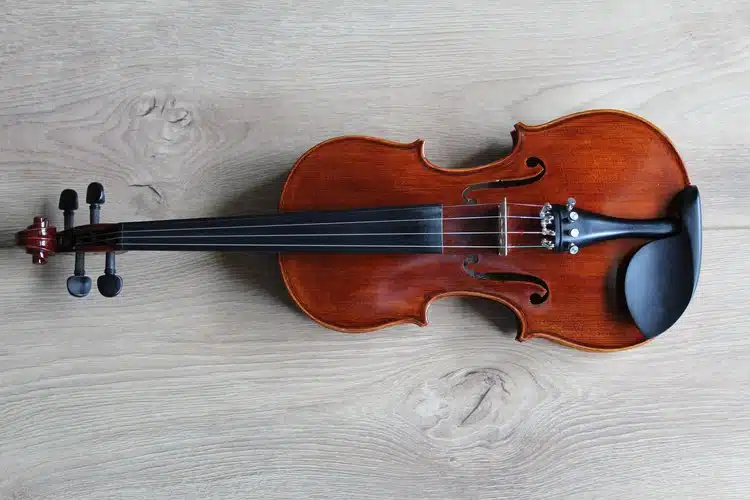January 18, 2022
A Brief History of the Violin

Many people know that the Italian luthier Andrea Amati developed the modern violin family in 1555. However, it is worth noting that various bowed-stringed musical instruments were invented before this date. It is helpful to consider the violin as an instrument that has gradually evolved over time instead of a perfected product that was invented instantaneously.
The elegant and traditional form of the violin may seem etched in stone as if this form has been a standard throughout history. However, the violin is a more recent invention compared to other instruments, though its creation was a slow and long process.
The Rebab and other Iterations
Did you know that one of the first recognizable ancestors of the modern violin is the Rebab? This instrument originated in the Middle East during the eighth century. You will also see the influence of the rebec (that emerged in Spain) and Arabian rabab in the modern violin.
The Rebab evolved with time in Europe into two separate and unique families of musical instruments: those that players held in their arms and were square-shaped (‘lira da braccio’) and those that players could position between their legs and had uniquely shaped sloped shoulders (‘lira da gamba’).
Both of these instruments had immense success; however, note that over time, the handheld instruments became more famous, leading to the development of the first violin in 1550.
The Emergence of the Violin
The violin emerged in 1550 in two Italian areas, Cremona and Brescia. While we don’t know who built the first violin, the first notable violin maker family in Cremona, Italy, was Amati. Later on the famous and excellent violin maker, Stradivarius, worked and lived in the same area. Even these days, most violins are developed following the design principles of Stradivarius.
The quality of violins made in Cremona led to the town being considered the home of the violin. Also, Cremona was home to the famous workshop of the notable Guarneri family of prolific instrument makers (Giovanni, Andrea, Giuseppe, and Bartolomeo.)
How has the Violin Changed Over the Years?
The violin has changed a little over time. For example, the earliest versions had only three strings. Violin makers added a fourth string in the middle of the 16th century. Did you know that all the violin strings were made from gut until about 1700?
After that, one string (the G String) with a silver wire was added in order to change the sound. However, nowadays all strings are a mixture of metal and nylon.
Note that the E string is often made of steel. In the eighteenth century, the violin underwent its most major and significant physical evolution. This was the change in the overall height of the bridge and extension of the neck and fingerboard. These changes ultimately improved the quality and volume of the sound.
The Violin Today
If you are interested in violin lessons, you probably know that the violin is one of the most popular musical instruments. Nowadays, violins are specially made so that they can produce high-quality sound electronically by using microphones and amplifiers, which eliminates the need for sound boxes.
Musicians use various amplifier settings to produce fully electric sounds. This sound can also be distorted in order to create different tonal qualities. It is no secret that the violin has gradually evolved to be a very valuable and versatile instrument.
Music Lessons and Education for Kids
As an inspiring violinist, your child should be aware of the violin’s predecessors, such as the Rebab, and how the violin carved its way into a prospering musical community already saturated with many instruments.
If your child is interested in violin lessons, you can start their musical journey with The California Conservatory of Music. Music education and lessons are important aspects of providing your children with a well-rounded education. Sunnyvale music lessons and Redwood City music lessons can provide developmentally appropriate music education for young children, introducing various concepts such as body movement, rhythm, and singing to preschoolers and toddlers.
Are you looking for violin lessons to help with the school orchestra? Note that students who sign up with the California Conservatory of Music will learn and become advanced and creative students and also benefit from improved discipline, friendships, and life skills.
